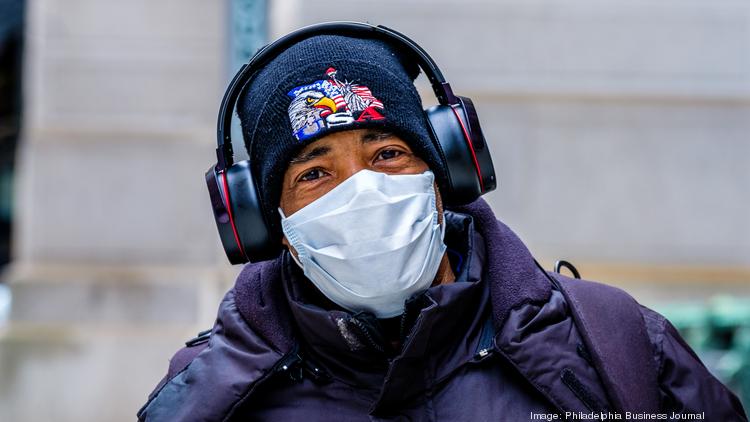Article originally published in the Philadelphia Business Journal on March 27, 2020. Updated March 30, 2020.
We are living in an extraordinary time. Our country has been attacked by an invisible enemy and we are not adequately prepared. The impact of the new coronavirus on our way of life is unprecedented. As of yet, there is no vaccine against COVID-19.
Due to the continued increase in COVID-19 cases, on March 29, President Donald Trump extended the federal shelter in place guideline until April 30.
Large swaths of the economy have been shut down. Unemployment has risen astronomically. Unless we are working on the critical infrastructure that provides us with food, medicine, transportation or healthcare, as well as our energy, information technology or communications infrastructure, we have been ordered by our state governors to stay home and shelter in place. Social distancing has entered our lexicon as the most effective way to slow down the exponential rate of infection and “flatten the curve,” to avoid overwhelming our hospitals.
There are still an insufficient number of COVID-19 test kits to address the rapid spread of the virus. Hospitals are short of masks, gloves and gowns to protect our doctors and nurses. There is a shortage of hospital beds to treat the sick. There is a shortage of ventilators, which will force doctors to make life and death decisions on who gets a ventilator and who doesn’t.
A March 26 Fox News article is headlined, “Doctors in distress, quarantine; send SOS for more protective gear [and] tests: ‘It’s a complete mess,’” is an accurate description of the state of our medical system defense against COVID-19.
Hospital medical staffs are overwhelmed. A March 25 article by ABC News headlined, “Inside the coronavirus ‘Ground Zero’: Elmhurst Hospital in New York City,” quotes an emergency room physician stating, “It’s apocalyptic.” A nurse stated, “I’ve never seen anything like this … [it’s] absolute chaos. The facility is overwhelmed.” Another nurse stated, “We’ve almost run out of ventilators twice, but in the nick of time we received them.” A video on the March 26 ABC Evening News showed people waiting in line to gain entrance to the hospital to be treated.
Our doctors, nurses and all those who are treating patients for COVID-19 are on the front lines of this war, no different than our soldiers who serve on the front lines during military conflicts. The difference is our soldiers have the weapons they need and don’t run out of ammunition. They get the best battlefield care possible to preserve life.
Our doctors and nurses are working overtime in a highly stressful environment. They risk becoming ill with the virus and infecting their loved ones when they return home every day to get a few hours of sleep before going back to their respective hospitals. They are heroes in every sense of the word.
The medical staff treating wounded soldiers have a comparatively low chance of becoming a casualty compared to a doctor or nurse who can be infected by the virus while treating a patient. If they become infected, they and those they were in contact with are then quarantined, resulting in the loss of their services. Or worse, they can become fatalities in this war. Fortunately, like the military reserves, thousands of retired doctors and nurses are volunteering to take the place of those who have fallen sick.
The COVID-19 impact on our country is unprecedented, beyond any military attack the U.S. has ever experienced. We were naïve just prior to the surprise attacks on Pearl Harbor and on 9/11. The attack by COVID-19 was not a surprise. We saw it coming. Let’s not be naïve again.
Before and during the first arrival of COVID-19, there was thought that the virus would not be much worse than getting the flu, not-withstanding an initial fatality rate of 8% for those ages 70-79, 15% for ages 80 and above, and 49% for critically ill patients. The actual statistics will not be known until after the pandemic passes.
Public health officials have long talked about our inadequate virus defense preparation, given the periodic outbreaks of Ebola, SARS and MERS in other parts of the world. It was only a matter of time before a virus would attack the U.S.
The Trump administration in May 2018 merged the National Security Council’s Health Security team into the National Security Council, diffusing the leadership our country needs to respond to pandemics. Who will lead our response the next time our country is attacked by a disease such as COVID-19?
So, after the COVID-19 crisis passes, how will we prepare for the next public health crisis? Will we ignore it or view it as a dangerous threat? We need to treat public health defense as importantly as military defense. The voters need to demand it from candidates running for federal and state office.
Stan Silverman is founder and CEO of Silverman Leadership and author of “Be Different! The Key to Business and Career Success.” He is also a speaker, advisor and widely read nationally syndicated columnist on leadership, entrepreneurship and corporate governance. He can be reached at Stan@SilvermanLeadership.com.

